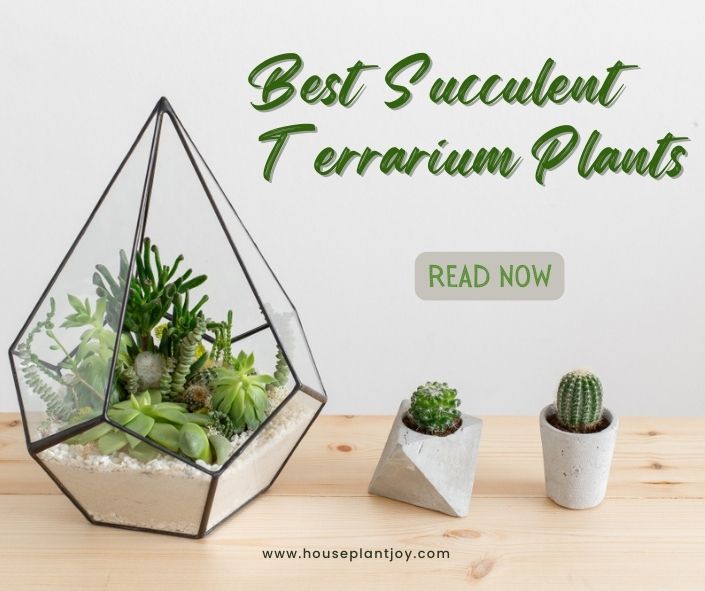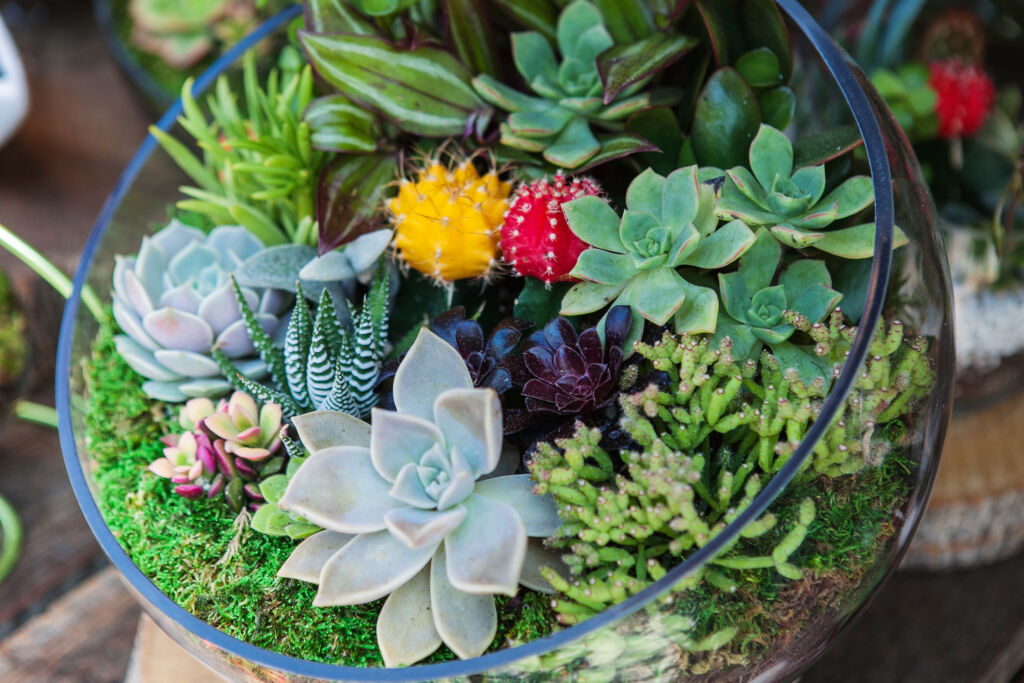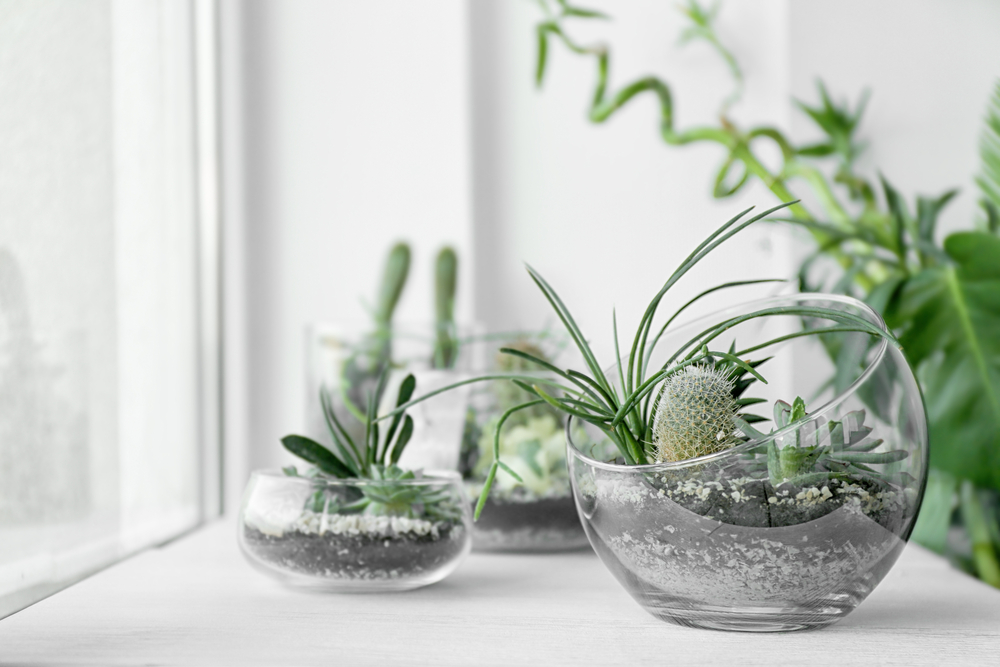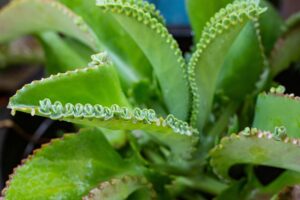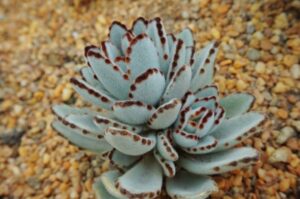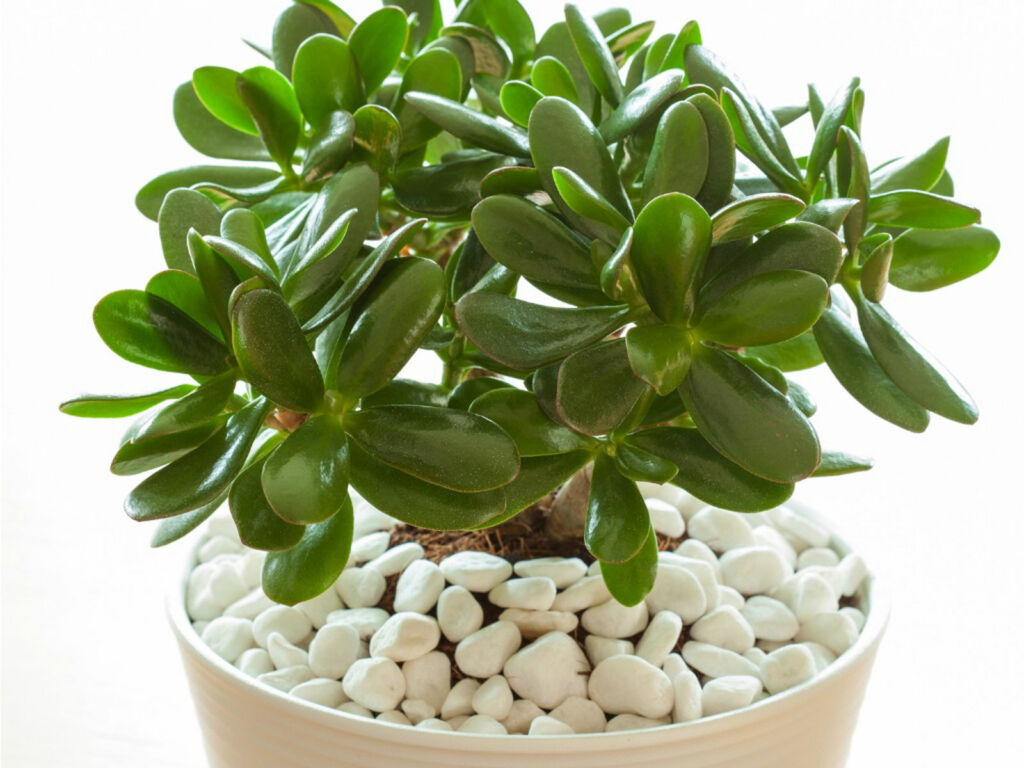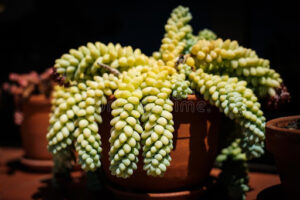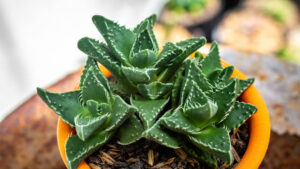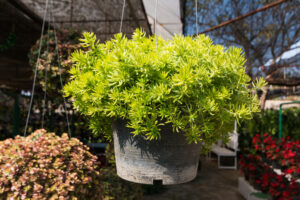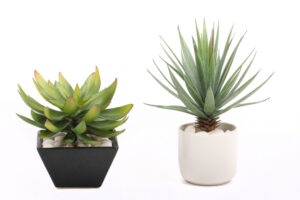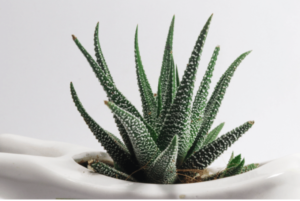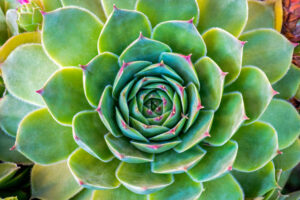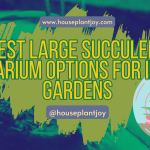HousePlantJoy is supported by our audience. When you purchase through one of our links, we may earn a small affiliate commission. As an Amazon Associate I earn from qualifying purchases. Your cost is not affected.
==================
Best Succulent Terrarium Plants
Looking to add a touch of greenery to your home but don’t have the time or space for a garden? A succulent terrarium is the perfect solution! These little plants are low-maintenance and come in a variety of shapes and sizes, making them perfect for any terrarium. But what are the best succulent plants for a terrarium? Keep reading to find out! The succulent terrarium plants are small, require little maintenance, and feature stunning textures.
Having terrariums is a fun activity, and the best succulent terrarium plants can add more appeal to your décor. Terrariums are fun to design, easy to maintain, and instantly add a flare to any bookshelf, desk, or office table. Before we talk about the best succulent for terrariums, let’s discuss what terrariums are and their types. And, when you are ready to add those plants, check out the many options at JoyfulEco.
What are Succulent Terrariums?
Terrariums are great for creating a miniature garden indoors. A terrarium is basically a self-reliant ecosystem that doesn’t need much of your attention. However, you need information, proper tools, and the ideal succulent terrarium plant selection to design a contained, miniature garden indoors.
A terrarium works using a process known as “transpiration.” It means when you add water to the soil, it will be soaked up through the roots of your plants. Your plants then draw moisture from the roots and evaporate it through leaves. The process produces droplets dripping down the sides of the terrarium and returning to the soil. The transpiration process basically impersonates nature’s rain cycle to keep your plants thriving.
Terrariums are great for an array of diverse miniature plants. They include rocks, moss, and other materials in a glass vessel, such as a jar or bowl. While most succulents are hard to grow in humid environments, they thrive in terrariums.
In addition to a closed terrarium in which the transpiration process creates a an independent mini succulent garden, there are other techniques you can try to make a miniature garden. Remember, cacti and Succulents for terrariums do best in an open container and should not be planted in a closed container.
small succulent terrariums
Types of Succulent Terrariums
Terrariums have two types; closed terrariums and open terrariums. A closed terrarium isn’t a good option for plants susceptible to root rot. These terrariums have high humidity levels and require more water. On the flip, open terrariums also have a wide opening glass container. However, they have less humidity, so they also need less water.
The best Succulent for terrariums is one current trend we will focus on here. Cacti and succulents are native to arid, dry environments and do well in these conditions. An open system-terrarium can help them thrive for more extended periods.
Moreover, whether you are using a closed or an open terrarium, adding decorative elements is easy, and you can make it an exciting project.
Best Succulent Terrarium Plants for Closed Terrariums
You can choose to grow in a closed terrarium with plenty of succulents. Self-contained terrariums tend to get pretty humid, even if the start is very dry. In order to make such humid conditions work, you will need to find plants that are tolerant to high humidity.
Luckily, there are plenty of succulent terrarium plants that you can grow in a close terrarium. These succulents are easy to maintain, easy to grow, and can tolerate humidity. However, ensure that your terrarium has a lot of sun exposure to let your succulent survive.
You can start your project with succulent bromeliads, such as Hectia, Dyckia, or Cryptanthus, which can tolerate humid environments. Moreover, while succulents, such as Spanish moss and air plants, are also an excellent option, they are a bit pricey. However, these succulents love and thrive in very humid conditions.
Care for Succulent Terrarium Plants
When you start your succulents for the terrarium project, there are three vital factors that you should keep in mind.
· Sunlight
Most terrarium succulents love thriving in a sunny location with plenty of indirect light. The best thing about these plants is that they can go well even under fluorescent lighting. They are an excellent choice for creating a miniature indoor garden or adding a flare to dull office spaces.
Generally, a window facing east or south is the best place where you can place your succulents. However, prevent direct sunlight exposure, which can burn the leaves.
· Watering
Hold watering until the soil is completely dry. If you notice the soil pulling away from the container’s edge, you need to water your terrarium succulents. However, note that most succulents need watering once a week or a couple. When watering, I recommend using a spray bottle and water at the base of the plant to prevent root rot.
· Soil
In order to make your succulents for terrarium project a successful one, the soil plays a critical role. Most succulents have shallow roots and thrive in drought-like growing environments. These factors make succulents an ideal, low-maintenance choice to grow in terrariums.
· Fertilizer
Note that adding fertilizer to your terrarium can kill your succulents. You want to maintain a slow but healthy growth of your plants, so you don’t have to repot them into another terrarium. Your succulents will get the essential nutrients they need from the soil. However, an occasional light fertilizer application keeps them healthy.
Best Succulent Terrarium Plants
So let’s get into some of the best succulents for terrariums. These succulents should grow well in an open dish container and be relatively slow-growing, which is what you want in a succulent terrarium.
1. Mother of Thousands (Kalanchoe daigremontiana)
Mother of thousands is a stunning succulent for a terrarium. The houseplant is beautiful and an exciting option to start your terrarium. The succulent has various other names, including alligator plant, Mexican hat plant, Devil’s backbone, etc.
Native from Madagascar, the plant grows up from a single stem. It produces pointed blue-green leaves that can grow up to six inches. The succulent itself grows up to 35 inches. However, what makes it unique are its little plantlets that grow along the edges of the leaves. These tiny plantlets drop easily and try to take root and find suitable soil for growth.
Please note, however, that this plant propagates quite freely. Just remove the plantlets to avoid having them overtake your terrarium.
Caution: While a unique and interesting plant, it is toxic to pets and their humans.
- Use caution when handling and be sure to wash your hands thoroughly.
- Keep away from children and pets.
- The plant needs a lot of light exposure. During summer, expose your succulent to indirect sunlight; during the cooler temperature, it is exposed to direct sunlight.
- Try maintaining a temperature of 75 Fahrenheit (up to 24 Celsius).
- Since the roots of the succulents are pretty delicate, they need proper air circulation.
- If possible, use a terracotta pot with drain holes at the bottom.
- Thoroughly watering can enhance its growth. However, let the soil dry out before watering.
2. Panda Plant (Kalanchoe tomentosa)
The panda plant is another best succulent terrarium plant with soft, unique, velvety leaves. A native to Madagascar, the panda plant can grow up to a couple of feet in an appropriate environment. It produces grey-green leaves with chocolate-brown edges.
Panda Plant
The succulent has various other names, including donkey ears, white lady, cat ears, chocolate soldiers, etc.
The panda plant is a low-maintenance succulent and can be grown indoors. While the succulent is known for their hardiness, they still need your attention to survive.
Care Tips
- As a drought-tolerant succulent, the panda plant is susceptible to root rot. So, water only when the soil is dry to touch.
- Panda plants thrive a room temperatures ranging from 60 to 75 degrees.
- While the panda plant is naturally hardy, fertilizing can help keep your plant healthy. Use diluted fertilizer once a month.
- Protect your plant from mealybugs. Watch for pests and remove them with a cloth dipped in rubbing alcohol.
- Since the plant is toxic, keep your pets away from it.
3. Snake Plant (Dracaena trifasciata)
The snake plant is a common and one of the best succulent plants for terrariums. This miniature plant is also included in NASA’s Clean Air Study. The plant feature wide leaves with an up growing habit. The foliage often has a variegated pattern resembling an exotic snake’s colors.
Snake Plant (Sansevieria)
While snake plants seldom have flowers when grown indoors, a mature snake plant can surprise you by producing a slender spike of tiny lily-like flowers. The blooms are often pale pink, white, and quite fragrant. Snake plants can thrive in both bright and dimly light environments.
- While the succulent can grow well in low light environments, ensure to provide it with medium indirect light to promote even growth.
- It needs water every couple of weeks (or when its leaves start to wrinkle).
- Use a chunky potting mix that contains additives like sand and perlite for better drainage and to prevent root rot.
- It needs less water than other succulents, so let the soil dry out between watering.
- Since snake plants convert CO2 into oxygen and purify the air, you can put it in your bedroom.
4. Jade Plant (Crassula ovate)
The Jade plant is another easy-to-grow succulent terrarium plant. It features thick leaves and sturdy branches, which means it is one of the best succulents for terrariums. While jade plants tend to be low-growers, they produce amazing results.
Jade Plant
Although they like a lot of light exposure, jade plants don’t need full sun. Just try to provide them with at least four hours of sunlight daily. These succulents also easily propagate and produce new shoots from old stems. The jade plant is the best option to create lush, dense plants in your miniature garden.
The plant is a popular succulent for terrariums, and people enjoy growing it in homes and offices. The Jade plant is also considered a symbol of good luck.
Tips
- Use a succulent-specific potting mix to let the jade plant thrive.
- Provide them with plenty of bright, direct sunlight to promote even growth.
- During hot temperatures, water your plant weekly.
- In colder months, water sparingly (every two or three weeks).
5. Burro’s Tail (Sedum morganianum)
Burro’s Tail is a striking succulent terrarium plant featuring long, sweeping stems hidden in plump, overlapping leaves. Burro’s Tail is a naturally hardy plant like many other succulents and can tolerate dry air and heat. Additionally, it needs water sparingly.
Burro’s Tail
If you want to add this plant to your terrarium, place your terrarium near a window and position it to the south or west. The plant needs at least four hours of bright, direct sunlight to thrive.
While it is okay to mix Burro’s Tail with other plants, it is a fragile plant and needs to handle delicately. Also, make sure to provide plenty of space to promote growth.
Care Tips
- Since the plant is a slow grower, you will have to transplant it more often.
- Burro’s tail propagation is easy, and you can have many of them to fill your terrarium.
- The plant performs well in hanging baskets.
- Avoid overwatering as it could cause the stem to rot, eventually killing your plant.
6. Tiger Jaws (Faucaria tigrina)
A native to South Africa, Tiger Jaws is tolerant to slightly cooler temperatures than various other succulent plants. The plant is also one of the best succulent terrarium plants for growers in temperate climates. It produces star-shaped rosettes and grows in clumps of stemless amongst rocks in its native habit.
Tiger Jaws
As a low-growing perennial, it reaches about six inches in height. Tiger Jaws produce triangular-shaped, fleshy leaves of about two inches. It blooms in the fall or early winter for a few months and produces flowers ranging from yellow to white or pink. Like any other succulent, Tiger Jaws also loves the sun and a bit of water.
Care Tips
- Tiger Jaws love growing and thriving in well-draining soil like cactus potting soil.
- While it can tolerate extremely high temperatures, the plant will stop growing and need more water.
- Water sparingly during cooler temperatures.
- Fertilize your plant using a diluted liquid plant food from spring through summer.
- It needs repotting every two to three years.
7. Stonecrop (Sedum)
Stonecrop love to thrive in arid areas. Growing this succulent plant is straightforward because it has low-maintenance and low-culture requirements. The succulent will thrive in sunny locations and surprise you with easy color and form. They are low-grower and trailing plants.
Stonecrop can grow up to a foot in height, and all these plants feature a rosette form, producing a flower at the top of the foliage. They have thick and semi-glossy leaves. Originating from Europe and Asia and finding their way to North America, most of them become naturalized and can be grown in nature.
They have an array of hybrid types. They produce flowers rich with sweet nectar to attract butterflies, moths, and bees. The colors vary but often are pastel families of hues. Flowers remain on the plant well into early winter, which is one of the best succulents for terrariums.
Care Tips
- Since stonecrop looks good throughout the growing season, you can mass plant them in terrariums.
- Although they require minimal maintenance, place them in a sunny spot.
- Proper drainage is essential to prevent root rot and infesting.
- Cut back the plants after flowering to encourage their bushier and sturdier growth.
- Water sparingly. Allow the soil to dry out before watering.
8. Agave Victoria Regina (Agave victoria-reginae)
It is another easy-to-grow succulent terrarium. The plant grows slowly and produces stunning clumps of foliage in a rosette formation with white marking. It can grow a foot high, and once done spiking, it produces reddish-purple flowers.
Agave
Since the succulent is monocarpic, the parent plant dies after blooming. It is also possible to harvest seed pods and wait for pups to grow from the flower spike. Agave Victoria Regina produces beautiful tapered, variegated foliage with a sharp terminal spike tip.
Care Tips
- Planting Victoria Agave outdoor means it will need full sun exposure or light shade.
- Make sure to protect it from the burning afternoon sun.
- When growing indoors, find the sunniest window to place your succulent.
- During heavy rain in colder months, bring your succulent inside.
- Make sure to keep the soil dry in the wintertime to let your succulents thrive.
9. Aloe (Aloe Vera)
This kind of aloe features smooth, white-spotted leaves curving backward. Although the plant is accustomed to arid environments, it still requires adequate watering to thrive. It is also an easy to grow, attractive succulent, and a great indoor companion. The plant is entirely stemless or has a short stem covered with greenish, thick, fleshy leaves.
When planting alone in a terrarium, keep in mind that it will need a location that can offer bright, indirect sunlight. Too much exposure to direct sunlight means you will have to water more often. It is among the most easy-to-grow succulent terrarium plants.
Care Tips
- Aloe loves thriving in a bright, indirect sunlight environment.
- Prevent direct sun exposure, or it will turn the leaves yellow.
- If you notice leaves turning yellow, water your succulents more often.
- Avoid eating gel from leaves, or it can cause unpleasant symptoms.
- Plant it in a container that should have at least one drainage hole at the bottom to prevent root rot.
- For aloe with a stem, use a deep container to plant the stem under the soil.
10. Hens and Chicks (Sempervivum)
Hens and Chicks are another one of the best succulents for terrariums. They are resilient, easy-to-grow, and low-maintenance succulents that you can add to your terrarium. These plants feature concentric rings of leaves forming a rosette and resembling an artichoke.
Also called houseleeks, Hens and Chicks come in various shades, including blue, copper, purple, red, and green. They are low-growing perennials that stay close to the ground. Since they have the ability of self-propagation, Hens and Chicks make them a good groundcover succulent.
Care Tips
- These succulents prefer a temperature ranging from 65 to 75 degrees Fahrenheit.
- Avoid exposing them to extreme temperatures, or it can stop their growth.
- They like getting at least six hours of sunlight daily to produce colorful foliage.
- Plant them in rocky, sandy soil. They are ideal for rock gardens.
- They also thrive in flower beds with proper drainage.
- Since Hens and Chicks are among drought-tolerant succulents, water rarely.
Inspired to Begin Your Succulent Terrarium Project?
So many choices for the best succulent terrarium plants to create a miniature indoor garden. We’ve included easy-care succulents choices to provide you with low-maintenance options. Choose your favorites and start your terrarium project for amateur and pro gardeners. When you are ready to purchase your plants, visit our shop,
JoyfulEco.com
FAQs
What succulents do well in a terrarium?
Some low-maintenance and easy-to-grow succulents for terrariums are jade plant, aloe vera, tiger jaws, and chocolate soldier.

